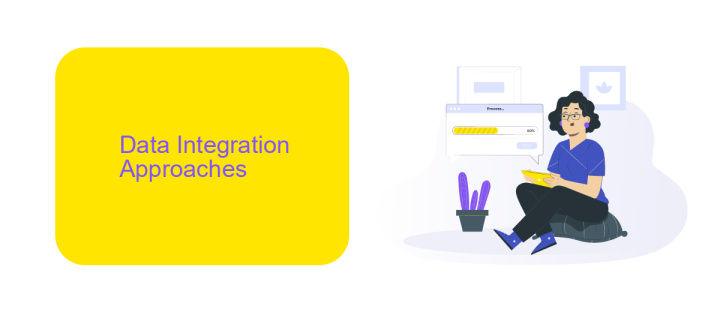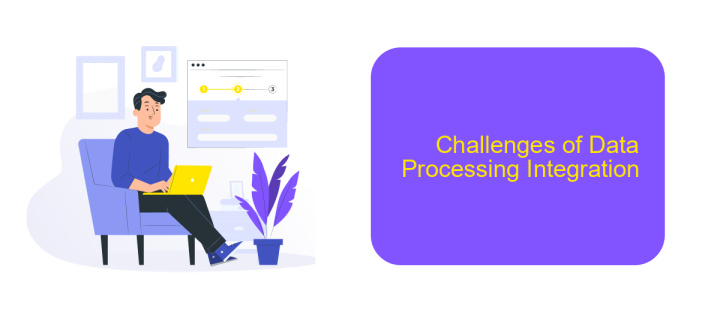Data Processing Integration
Data processing integration is a critical component in today's data-driven world, enabling seamless collaboration between various systems and applications. By unifying disparate data sources, organizations can achieve more accurate insights, streamline operations, and enhance decision-making processes. This article explores the fundamental concepts, benefits, and best practices for effective data processing integration, ensuring your organization stays ahead in the competitive landscape.
Introduction
Data processing integration is crucial in today's data-driven world, enabling seamless communication between various systems and applications. Efficient integration ensures that data flows smoothly, reducing redundancy and enhancing decision-making processes. By integrating data processing systems, organizations can achieve a unified view of their data, leading to more accurate insights and better business outcomes.
- Streamlined data flow between systems
- Reduction of data redundancy
- Enhanced decision-making capabilities
- Unified data view for accurate insights
One of the tools that facilitate data processing integration is ApiX-Drive. This service allows for easy setup of integrations between different applications without requiring extensive technical knowledge. By automating data transfers and synchronizations, ApiX-Drive helps organizations save time and resources, ensuring that their data is always up-to-date and accessible. Utilizing such services can significantly improve the efficiency and effectiveness of data processing integration efforts.
Data Integration Approaches

Data integration approaches vary widely, depending on the specific needs and architecture of an organization. Traditional methods include manual data entry and custom coding, which are often time-consuming and prone to errors. More modern approaches leverage ETL (Extract, Transform, Load) tools that automate the process of data extraction from multiple sources, transformation into a suitable format, and loading into a data warehouse or other storage solutions. These methods are highly efficient and reduce the risk of human error, but they can be complex to set up and maintain.
Another increasingly popular approach is the use of integration platforms as a service (iPaaS) like ApiX-Drive. These platforms offer pre-built connectors and workflows that simplify the integration process, allowing organizations to connect disparate systems without extensive coding. ApiX-Drive, for instance, supports a wide range of applications and provides a user-friendly interface for setting up and managing integrations. This not only speeds up deployment but also offers scalability and flexibility, making it easier for businesses to adapt to changing data requirements.
Benefits of Data Processing Integration

Integrating data processing systems offers numerous advantages for businesses aiming to streamline their operations and enhance decision-making. By consolidating various data sources into a unified system, organizations can achieve higher efficiency and accuracy in their data management processes.
- Improved Data Accuracy: Integration reduces the risk of errors by ensuring that data is consistent and up-to-date across all systems.
- Enhanced Efficiency: Automated data processing minimizes manual intervention, saving time and reducing operational costs.
- Better Decision Making: Access to comprehensive and real-time data enables more informed and timely business decisions.
- Scalability: Integrated systems can easily scale to accommodate growing data volumes and business needs.
- Cost Savings: Reducing the need for multiple data processing tools and platforms lowers overall IT expenses.
Tools like ApiX-Drive facilitate seamless data processing integration by offering user-friendly interfaces and robust automation features. This service helps businesses connect various applications and data sources effortlessly, ensuring smooth and efficient data flow. By leveraging such tools, organizations can optimize their data processing workflows and focus more on strategic initiatives.
Challenges of Data Processing Integration

Integrating data processing systems poses numerous challenges, primarily due to the complexity and diversity of data sources. Organizations often need to harmonize data from various formats, structures, and platforms, which can be a daunting task. Ensuring data consistency and accuracy across these disparate sources is critical but challenging.
Another significant challenge is maintaining data security and compliance. As data flows through multiple systems, the risk of data breaches and non-compliance with regulations increases. Organizations must implement robust security measures and ensure adherence to data protection laws.
- Data inconsistency and accuracy issues
- Security and compliance risks
- Scalability and performance concerns
- Integration of legacy systems
Tools like ApiX-Drive can help mitigate some of these challenges by providing a seamless integration platform that connects various data sources and automates data workflows. This not only simplifies the integration process but also enhances data accuracy and security, making it easier for organizations to manage their data processing tasks effectively.
- Automate the work of an online store or landing
- Empower through integration
- Don't spend money on programmers and integrators
- Save time by automating routine tasks
Best Practices for Data Processing Integration
Effective data processing integration requires a well-planned approach to ensure seamless data flow between systems. Begin by thoroughly understanding the data requirements and establishing clear objectives for the integration. This involves identifying the data sources, formats, and the frequency of data exchange. Utilize robust integration tools like ApiX-Drive, which can automate data transfers and provide real-time synchronization, ensuring that data is consistently up-to-date across all platforms.
Another best practice is to implement data validation and error handling mechanisms. This ensures that only accurate and reliable data is processed, reducing the risk of inconsistencies and errors. Regularly monitor and audit the data integration processes to identify any issues promptly. Additionally, ensure that your integration strategy is scalable to accommodate future data growth and evolving business needs. By following these best practices, you can achieve efficient and reliable data processing integration, enhancing overall business operations.
FAQ
What is Data Processing Integration?
Why is Data Processing Integration important?
What are the common challenges in Data Processing Integration?
How can I automate Data Processing Integration?
What should I look for in a Data Processing Integration tool?
Apix-Drive is a universal tool that will quickly streamline any workflow, freeing you from routine and possible financial losses. Try ApiX-Drive in action and see how useful it is for you personally. In the meantime, when you are setting up connections between systems, think about where you are investing your free time, because now you will have much more of it.


